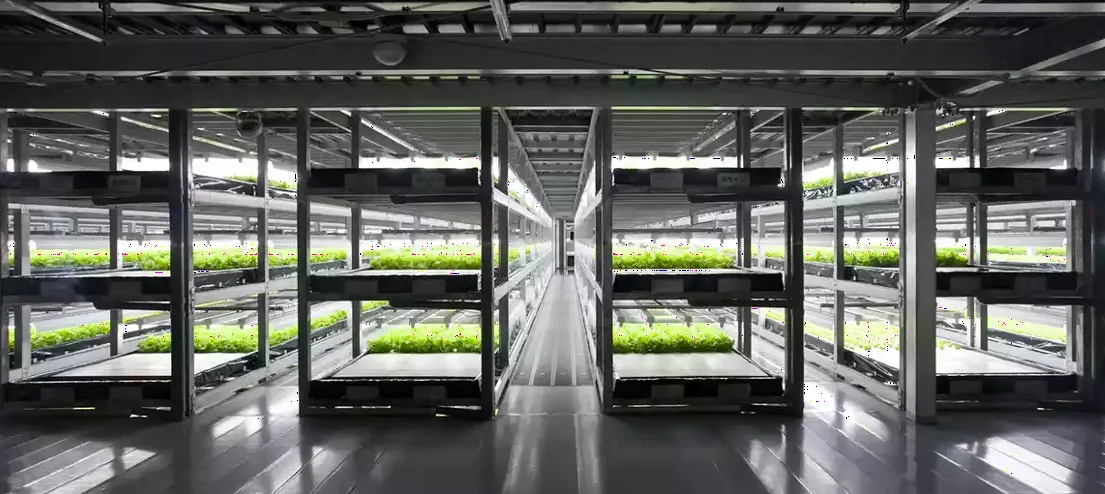
There’s a joke that every Seinfeld plot could have been resolved if Jerry had a smart phone. Whole episodes depended upon getting lost while driving or waiting to use a payphone. Smart phones wiped out entire categories of problems (wayfinding, fact retrieval, connectivity..) completely off the map in a way that couldn’t have been easily predicted in the 90s.
As we approach the 2020s, I’d like to present the argument that by 2030 we will be having serious conversations about the production and distribution of free food as society scale.
All ingredients for free food are already here. They’re just too klunky to use in combination with each other. But, as with smart phones, we will one day look back and marvel at how entire categories of problems could be wiped off the map by a few simple technological innovations.
The argument only requires you to agree to three observations:
Observation 1: The food supply chain is being automated

Agriculture is the most ancient driver of automation technology. And recently, universities and startups have begun deploying agricultural automations that remove the human completely.
Production. Food doesn’t just come from a field anymore: increasingly both meat and vegetables are being made in spotless laboratories staffed by robots.
- Hamburger patties grown in a laboratory were a wild science experiment in 2013, costing $325,000 per burger. Just three years later that cost has dropped to $11.36 and possibilities for automation and mass production are emerging.
- Vegetable farming has long been automated to a high degree, but even that is getting a major upgrade. Japan’s first robotic lettuce farm is already running in Japan Robots care for the plants in an indoor cleanroom, enabling complete automation of outcome.
Transport. Once you grow food, you’ve got to get it somewhere.
- Automated cars will provide the last mile. They'll drive within cities at low speed. Picture in your head a Dodge Caravan, except the side door slides open to reveal a to-go bag with the hamburger you ordered.
- Automated trucks will own the highways. Automated trucks will be specialized for highways, ferrying supplies between robot farms and restaurants. Highways are predictable. Cruise control with follow assist already automates much of the task of getting down a road safely.
- Supply-room robots to load and unload. Articulated hands are still extremely difficult, but warehouse robotics have come a long way. Amazon's fulfillment centers are already filled with robots to pick up and ferry packages from the right staging location to the right point of distribution transfer.
Preparation. Several companies already make robotized kitchen lines and soon you’ll be able to buy a robot-prepared hamburger in San Francisco.
Observation 2: Automation gets cheaper and better over time

Humans have been automating our food supply since the dawn of civilization. The Romans aqueducts, horse-drawn ploughs, tractor-farming, and so on.
Point for point, the technology to produce a fully-automated food supply chain is already here. If you were a billionaire today, you probably could order and eat a lab-to-table robot-made burger.
But it would cost you.
Even though the individual nodes in the supply chain are automation-ready, the full picture is in its infancy. They don't support food variety, industrial scale, supply` chain integration, or global distribution. Those are all big problems that will take decades to solve, but importantly there’re not new problems. This is going to happen for some locations in the world.
Observation 3: At a certain point, the economics will tip and food will be free
Picture, for a moment, solar powered robots harvesting tomatoes and growing beef in a lab. Self-driving vehicles that deliver those products to a food preparation facility. More self-driving vehicles that bring the cooked hamburger to your house.
There is a certain level of automation at which the marginal cost of the next hamburger delivered drops below the hamburger McDonald's will sell you. And if we're on that trend line, we can only conclude that soon after that point, there's point at which the marginal cost approaches zero.
Food will be free.
We need indicators for the post-economic world
Saying "food will be free," feels like the kind of sentence that will induce eyerolls. Not to be taken seriously.
But we should take this seriously. Because it's within our grasp, even within our lifetimes, and would leave the world a better place for every child who's ever felt hunger.
I think a way to have this conversation without eye rolls is to create economic indicators that represent how close we are to a fully non-human food supply chain. That way, the conversation isn't about whether it's possible, but rather how much it would cost today.
I propose the Robot Burger Coefficient as the first: the cost of producing hamburger from farm-to-table with no human involvement, divided by the cost of buying a hamburger from McDonald's
Today that cost is extraordinary, but I'm almost certain it could be quantified. And that means the Robot Burger Coefficient has a known value. I suspect tomorrow that value will be less. And then next week it will be less again.
Barring extension-level events, today’s RBC is the highest it will ever be. We’re going to see it drop every year.
Our conversation doesn't need to be about whether full automation is possible. Researchers and entrepreneurs can tackle that.
Instead, our conversation can be about what the would would be like at a Robot-Burger Coefficient of 1.0. And then what it would be like at a RBC of 0.001.
Free food has serious societal costs, but we can avoid them
We need to fix the economic hardships of the current system now, but we also need to be intentional about building a world in which today's economic hardships are nonsensical.
Today we have an assumption that food and shelter demands a price. The assumption is based on the idea that human is required for food and shelter. And that assumption has the consequence of an economic model that asks all humans to labor for 40–60 years of their lives as way to pay into the pool of labor that solves for these needs.
If we play our cards right, our grandkids really can be high-fiving in Star Trek uniforms, reading poetry and considering philosophy.
If we want that future, the time to chat about it is now.
We might as well discuss it over burgers.